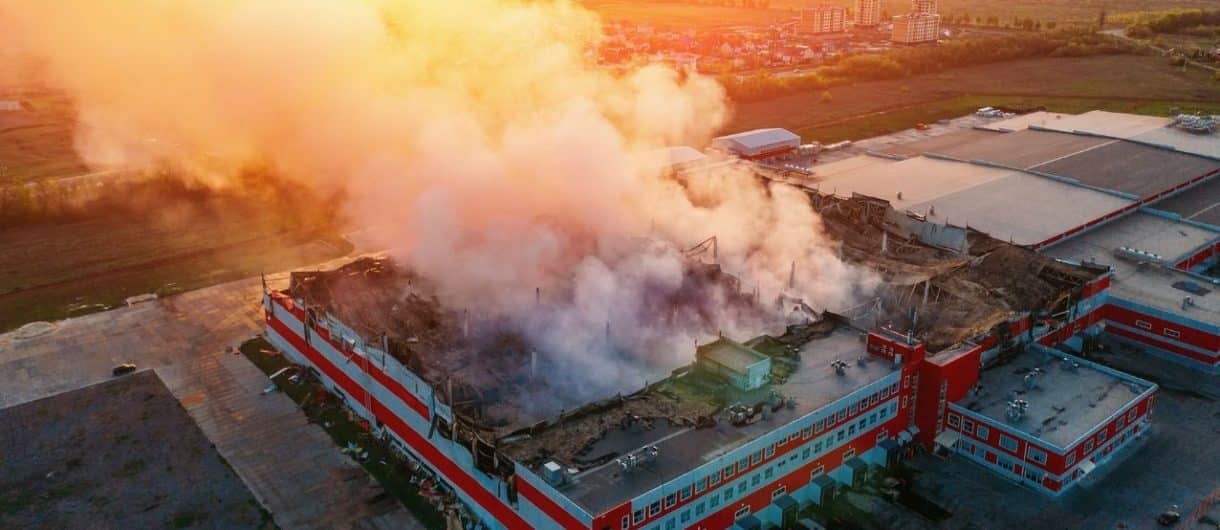
What fire resistance classifications exist for compartmentation elements
When developing a comprehensive fire protection plan for any facility, it is essential to understand the characteristics of the space and the existing risks in each case. This allows the design of a complete and tailored strategy, with the most appropriate systems and components featuring the correct fire resistance classifications for each application.
But do you really know what we mean by fire resistance? This article explains the key aspects behind this concept and what you need to consider for effective passive fire protection in your facility.
What will you learn in this article?
- What exactly is fire resistance?
- How is fire resistance classified in fire compartmentation systems?
- What does EI 120 mean? What do the numbers in each category represent?
What exactly is fire resistance?
Although this term is often confused with “reaction to fire,” it is important to understand that these are two distinct (but equally important) characteristics in the field of fire protection.
The UNE EN 13501-1 standard defines “reaction to fire” as:
“Reaction to fire, not to be confused with fire resistance, refers to the ability of a product or element to contribute or not to the development of fire.”
Meanwhile, the UNE EN 13501-2 standard defines “fire resistance” as:
“Ability of an element to fulfill, for a stated period of time, the fire stability, fire integrity, thermal insulation and/or other required functions, as specified in the test standard.”
Now that we understand both concepts, let’s address a key question…
How is fire resistance classified in fire compartmentation systems?
When evaluating fire resistance in a compartmentation system, it is critical to be aware of the different classifications used across the industry.
The old Spanish regulation only distinguished two categories: RF and PF. However, with the adoption of the UNE EN 13501-2 standard at the European level, classification criteria and terminology were harmonized across countries.
According to this standard, we now recognize three main classifications that apply to fire barriers and compartmentation elements:
E (Integrity)
This category includes barriers capable of preventing the passage of flames, smoke, or gases from the exposed side of the fire to the unexposed side. This containment helps stop the spread of fire to adjacent areas and protects materials away from the ignition point.
EI (Integrity + Thermal Insulation)
In this classification, products not only prevent the spread of flames, smoke, and gases but also block heat transfer. These elements act as thermal insulators, stopping excessive temperatures from reaching nearby areas, thereby preventing secondary ignition and reducing harm to people.
EW (Integrity + Reduced Heat Radiation)
EW-rated elements provide flame containment and also limit thermal radiation. A barrier meets this classification if the radiant heat flow does not exceed 15 kW/m2 at one meter from the unexposed side. This reduces the risk of combustion of nearby materials, although people may still experience high temperatures.
What does EI 120 mean? What do the numbers in each category represent?
Each of the three classifications mentioned above is typically accompanied by a number, and understanding this value is essential. These figures indicate how long a system can maintain its performance when exposed to fire—whether resisting flames, heat, or thermal radiation.
Before being marketed, products undergo standardized fire testing to determine their performance time. The numerical value reflects the number of minutes the element maintains its fire-resistant properties. A higher number means a longer duration of protection.
This highlights the importance of understanding fire resistance ratings when selecting fire protection solutions. Only by doing so can we ensure that the most suitable system is chosen for the characteristics, requirements, and activity of the facility.
Still need advice? Let’s talk.
References
- AENOR. (2007). UNE-EN 13501-1:2007+A1:2010. Classification based on fire performance of construction products and building elements – Part 1: Classification from reaction to fire test data. Spanish Association for Standardization (AENOR).
- AENOR. (2009). UNE-EN 13501-2:2009+A1:2010. Classification based on fire performance of construction products and building elements – Part 2: Classification using data from fire resistance tests, excluding ventilation installations. Spanish Association for Standardization (AENOR).